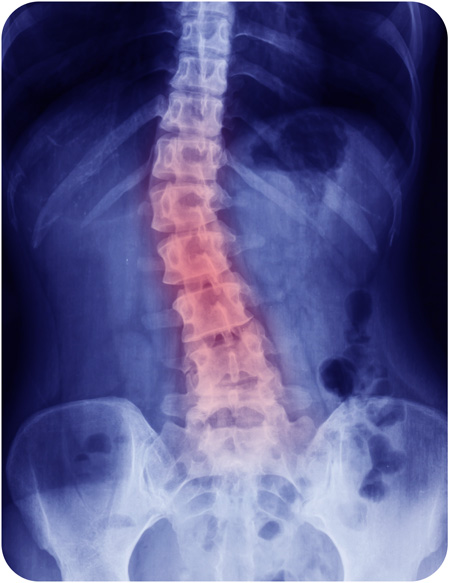Scoliosis is a progressive condition causing the spine to curve or twist into a “C” or “S” shape.
• Scoliosis is quite common, affecting two to three in every 100 people.
• In eight out of 10 cases, the condition usually develops between the ages of 10 and 16, during the growth spurt of puberty.
• During adolescence, girls are much more likely to be affected. This is probably because girls typically have shorter and faster growth spurts than boys.
• Scoliosis can go unnoticed in a child because it is rarely painful in the formative years.
Can it be prevented?
Chiropractors believe early intervention is important, as chances for stabilization and reduction of the curve are higher. An alert parent may notice that a high shoulder or low hip makes clothing fit poorly. Back and leg pains may develop but are often overlooks as merely “growing pains.”
If allowed to run its course, scoliosis can steadily worsen. Early detection is critical.
As well as the physical changes in appearance, back pain is the most common symptom of scoliosis in adults. Scoliosis can affect the nervous system. Problems occur when the bones in the spine compress on one or more nerve endings. This may lead to symptoms including – numbness or weakness in the legs, breathing difficulties, and can affect the heart and many other vital organs.
Chiropractic care has helped many people avoid the unhappy effects of scoliosis. First, a thorough examination helps detect scoliosis in its early stages. Then, corrective action can begin at once. Through gentle chiropractic adjustments, specific therapies, stretching and home exercises, patients can see improvement.
What’s the best time for a scoliosis examination?
As with the case of many health problems, early detection can improve the likelihood of correction. Wise parents consult our office soon after the birth of their child. Then they follow up with periodic chiropractic checkups throughout their child’s developing years.
It’s never too early to have your spine checked!
belfast, chiropractor, scoliosis, back pain, neck pain, headaches


Leave a Reply